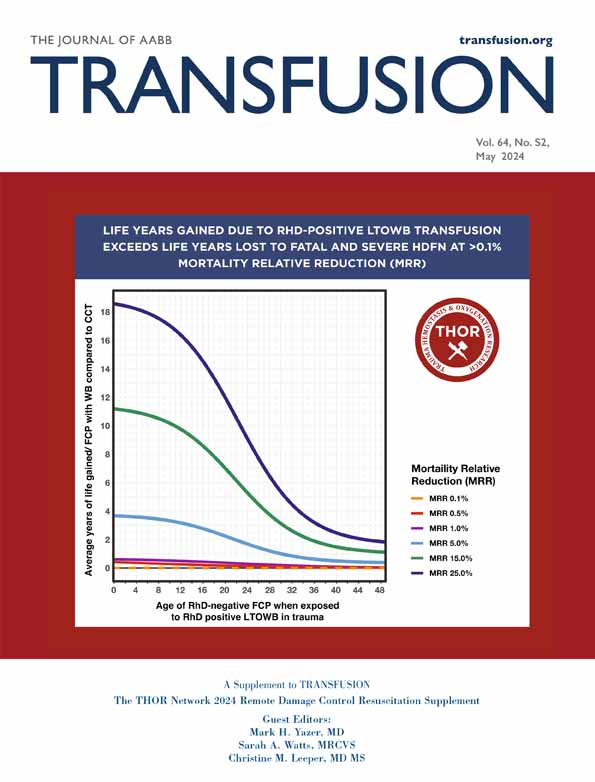A survey of low titer O whole blood use within the trauma quality improvement program registry
The views expressed in this article are those of the authors and do not reflect the official policy or position of the US Army Medical Department, Department of the Army, Department of Defense, or the US Government.
Abstract
Introduction
The use of low titer O whole blood (LTOWB) has expanded although it remains unclear how many civilian trauma centers are using LTOWB.
Methods
We analyzed data on civilian LTOWB recipients in the American College of Surgeons Trauma Quality Improvement Program (TQIP) database 2020–2021. Unique facility keys were used to determine the number of centers that used LTOWB in that period.
Results
A total of 16,603 patients received LTOWB in the TQIP database between 2020 and 2021; 6600 in 2020, and 10,003 in 2021. The total number of facilities that reported LTOWB use went from 287/779 (37%) in 2020 to 302/795 (38%) in 2021. Between 2020 and 2021, among all level 1–3 designated trauma facilities that report to TQIP LTOWB use increased at level-1 centers (118 to 129), and level-2 centers (81 to 86), but decreased in level-3 facilities (9 to 4). Among pediatric and dual pediatric-adult designated hospitals there was a decrease in the number of pediatric level-1 centers (29 to 28) capable of administering LTOWB. Among centers with either single or dual level-1 trauma center designation with adult centers, the number that administered LTOWB to injured pediatric patients also decreased from 17 to 10, respectively.
Conclusions
There was an increase in the number of facilities transfusing LTOWB between 2020 and 2021. The use of LTOWB is underutilized in children at centers that have it available. These findings inform the expansion of LTOWB use in trauma.
CONFLICT OF INTEREST STATEMENT
SGS, MDA, ADF, FLW, JAR, TMG, and SEN have all received funding from the Department of Defense in the form of grants to their institution. JMW has received travel support from the Society for Critical Care Medicine for committee duties. We have no other conflicts of interest to report.




